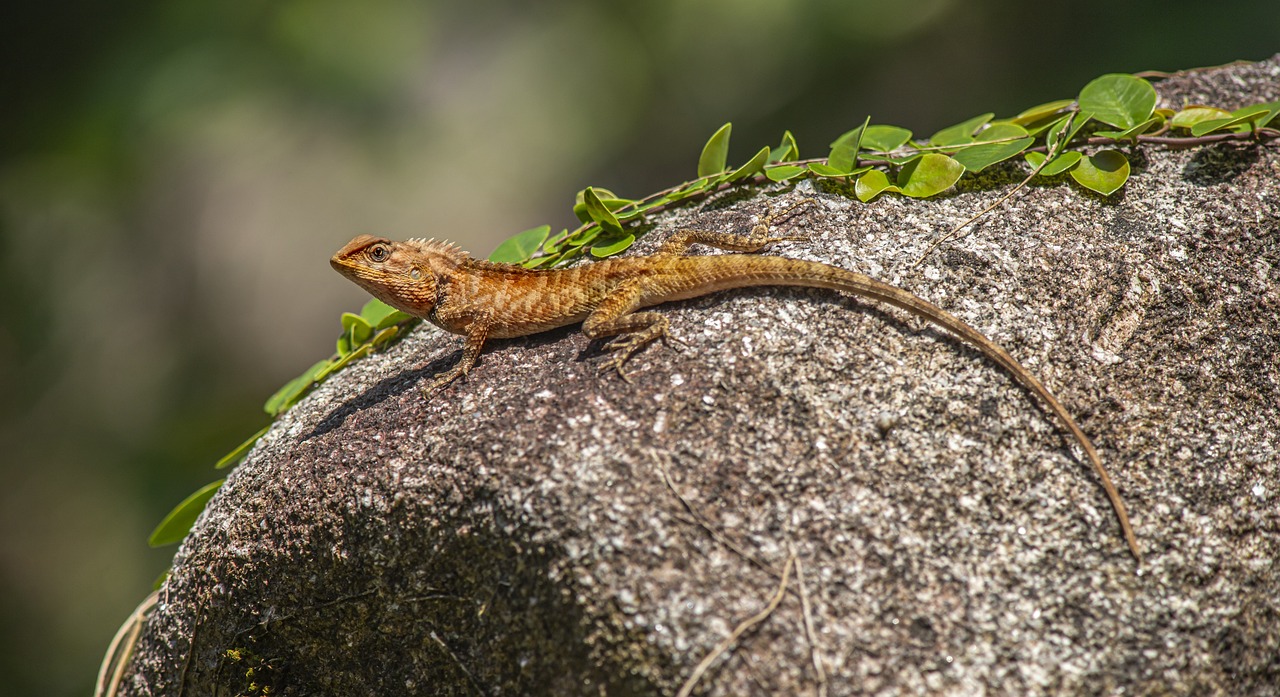The Oriental Garden Lizard (Calotes versicolor) is a species of agamid lizard that is widely distributed in South Asia and Southeast Asia. Known for its ability to change colors, it is often referred to as the “changeable lizard.” This species is commonly found in gardens, forests, and rural areas, where it preys on insects and small invertebrates.
Key Characteristics:
- Appearance:
- Size: Adults typically reach 20-40 cm (8-15 inches) in total length, including the tail.
- Color: The coloration of the Oriental Garden Lizard can vary significantly depending on environmental conditions, mood, and during the breeding season. It is often greyish or brownish with darker stripes or bands along its back. Males tend to become bright red or orange on the head and throat during mating season.
- Head: The head is distinct and somewhat larger in proportion to the body, with a pointed snout and prominent ridges along the sides.
- Body: The body is covered in rough, spiny scales, with a crest running down the back from the head to the tail.
- Behavior:
- Color Change: Like many agamid lizards, Calotes versicolor can change its color based on factors like temperature, light, and stress. This color-changing ability is most noticeable in males during courtship, territorial displays, or when threatened.
- Diet: The Oriental Garden Lizard primarily feeds on insects such as ants, grasshoppers, crickets, and other small invertebrates. It may occasionally consume small vertebrates like other lizards or even tiny birds.
- Territorial: Males are territorial and will aggressively defend their space from other males. They often display their bright colors and perform head-bobbing movements to ward off rivals.
- Breeding: Breeding season usually occurs during warmer months. Males become more vibrant in color to attract females. After mating, the female lays a clutch of 10-20 eggs in a burrow dug in the soil. The eggs hatch after several weeks, and the young are independent from birth.
- Habitat:
- Range: This species is found across a wide range of environments, including gardens, scrublands, forests, and even urban areas. It is native to the Indian subcontinent, but it has spread to parts of Southeast Asia, including countries like Thailand, Vietnam, and Indonesia.
- Adaptability: Calotes versicolor is highly adaptable and thrives in both rural and urban environments. It is often seen basking in the sun on fences, walls, or trees in gardens and parks.
- Lifespan:
- In the wild, the lifespan of the Oriental Garden Lizard is typically around 5-8 years, depending on environmental conditions and predation.
- Conservation Status:
- The Oriental Garden Lizard is not currently listed as a threatened species and has a stable population across its range. It is commonly encountered in both its native and introduced habitats, showing a high level of adaptability.
Conclusion:
The Oriental Garden Lizard (Calotes versicolor) is a common and adaptable species that plays a vital role in controlling insect populations in its habitat. Its striking color changes, especially during the breeding season, and its territorial behavior make it a fascinating species to observe. Its widespread distribution and ability to thrive in various environments, including urban gardens, have contributed to its success across South and Southeast Asia.
Views: 1329
Subscribe to the newsletter:
